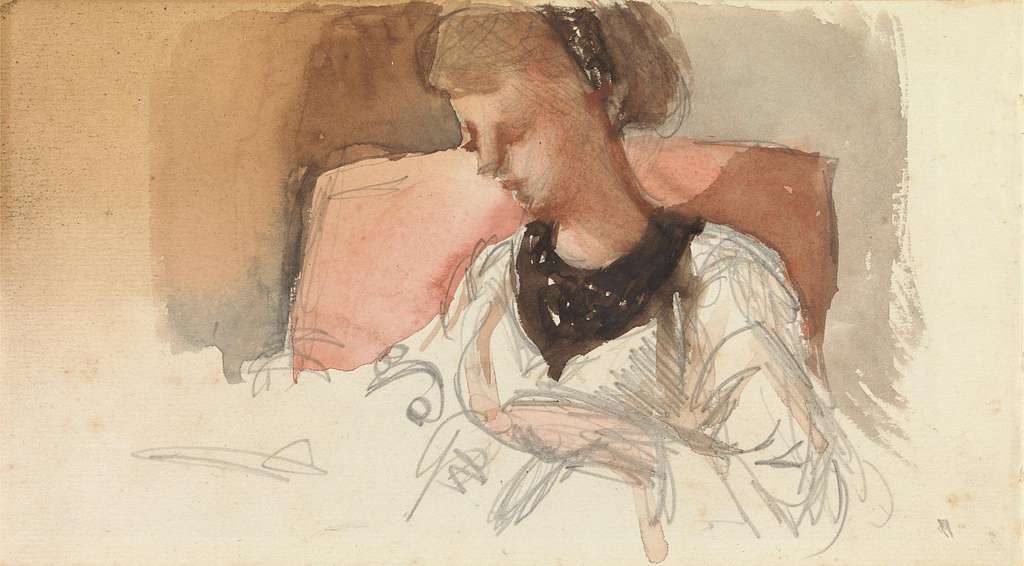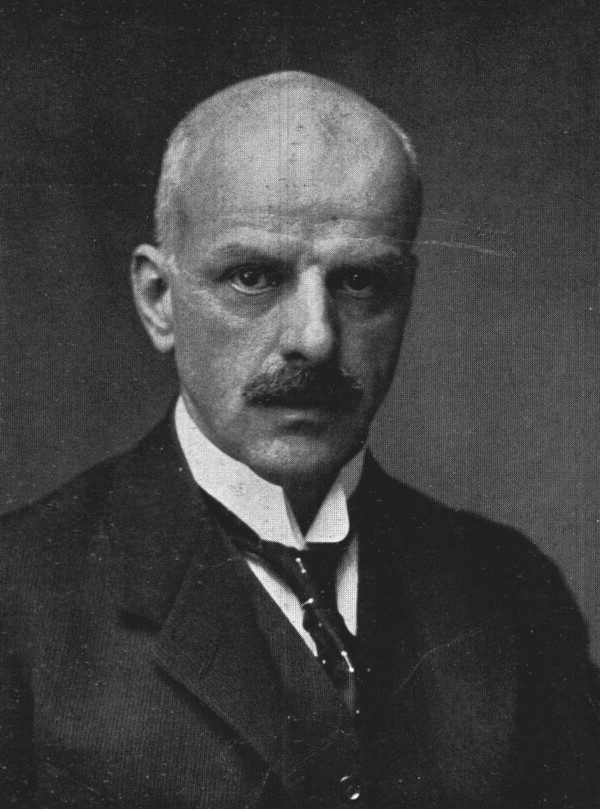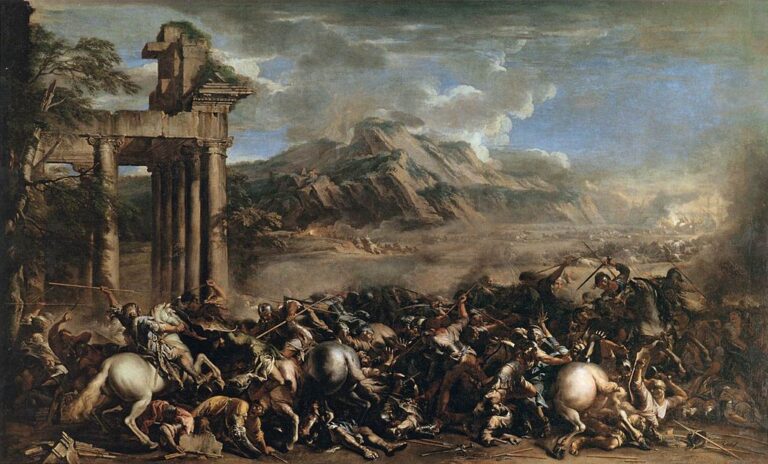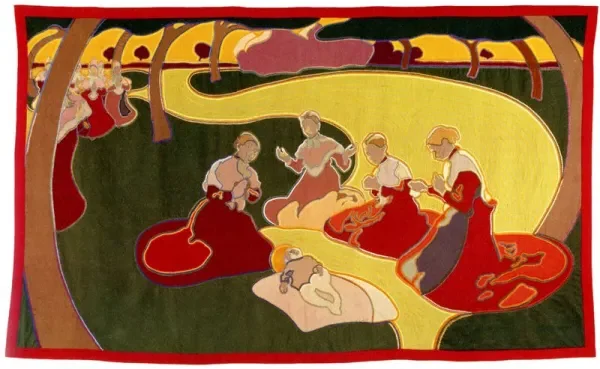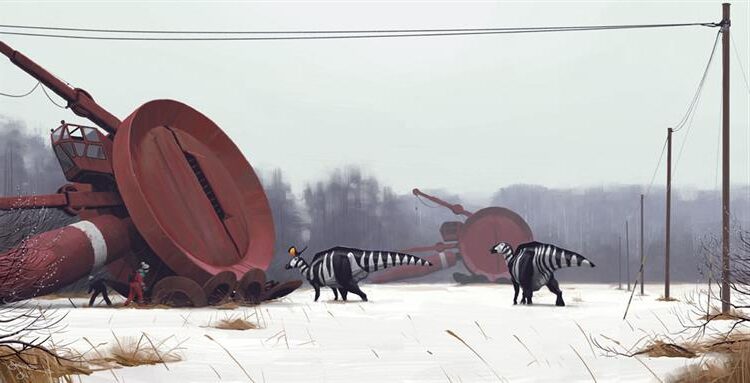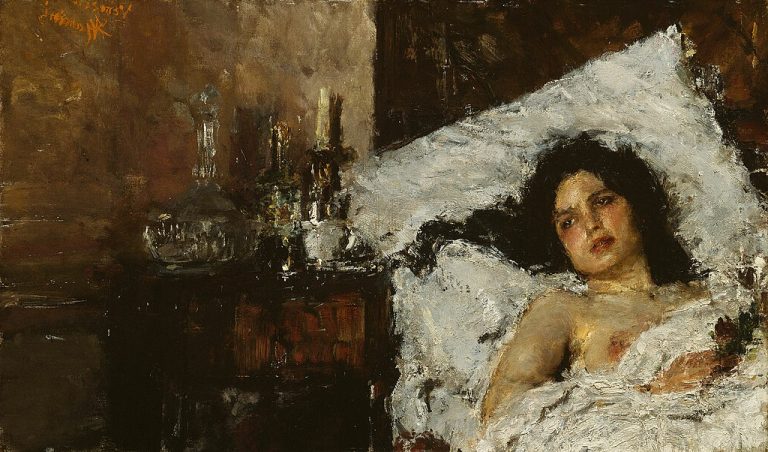Max Kurzweil Painter: Austrian Symbolist’s Haunting Legacy
Born: 12 October 1867, Bisenz, Czech Republic
Death: 9 May 1916, Vienna, Austria
Art Movement: Secession
Nationality: Austrian
Teachers: Christian Griepenkerl and Leopold Carl Müller
Institution: Academy of Fine Arts, Vienna and Académie Julian, Paris
Max Kurzweil Painter: Austrian Symbolist’s Haunting Legacy
Life and Education of Max Kurzweil
Max Kurzweil was an important Austrian painter. He lived from 1867 to 1916. Kurzweil studied art in Vienna and Paris. Later, he became a key figure in the Vienna Secession movement.
Early Life and Background
Max Kurzweil was born on October 12, 1867 in Bisenz, Moravia. His full name was Maximilian Franz Viktor Zdenko Marie Kurzweil. In 1879, at age 12, Kurzweil moved near Vienna with his family.
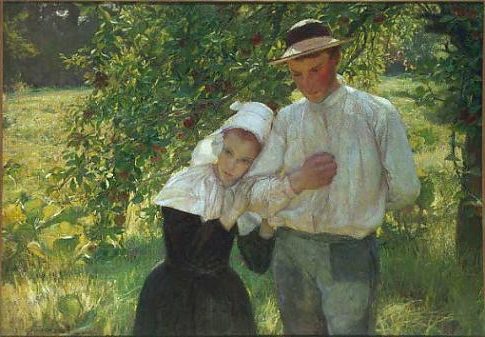
A Walk in the Garden (1896) by Max Kurzweil
Vienna was a major cultural center at the time. It likely exposed the young Kurzweil to art and music. This early move to Vienna shaped his future artistic path.
Artistic Training and Influences
Kurzweil studied at the Academy of Fine Arts Vienna. His teachers there were Christian Griepenkerl and Leopold Carl Müller.
In 1892, Kurzweil went to Paris. He attended the Académie Julian art school. Paris was an important art hub. It gave Kurzweil new ideas and skills.
Kurzweil showed his first painting at the Paris Salon while studying there. This was a big step in his career as an artist.
Teaching and the Vienna Secession
Kurzweil returned to Vienna and joined the Viennese Secessionist Movement. This group wanted to break from old art styles. Other members included Gustav Klimt and Egon Schiele.

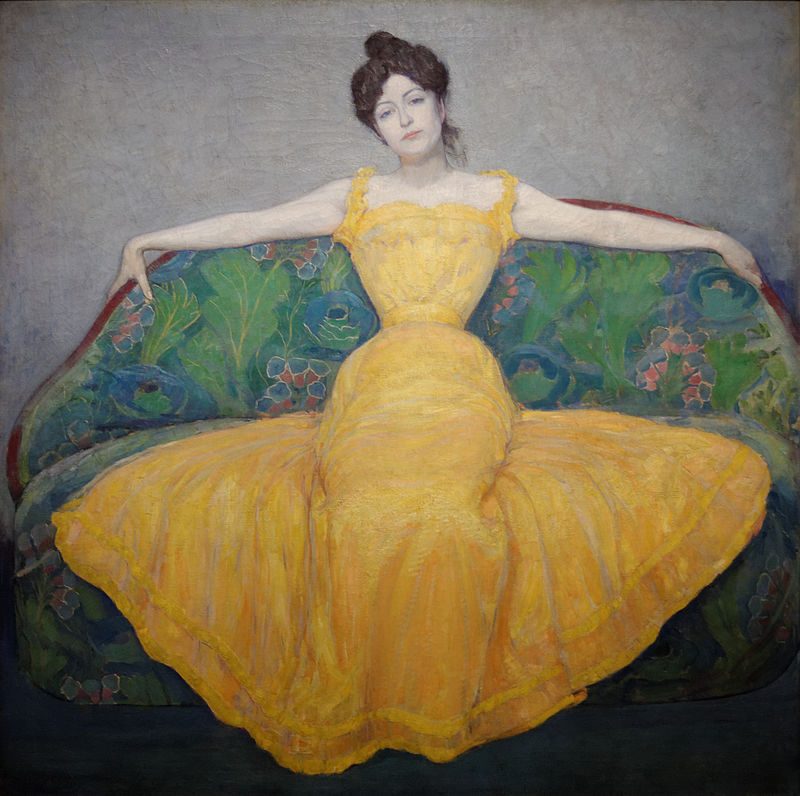
He taught at the School of Applied Arts for Women and Girls. Kurzweil helped train a new generation of artists.
His work was influenced by Swiss painter Ferdinand Hodler. Kurzweil’s style mixed realism with symbolic elements. He became known for his portraits and scenes of daily life.
Artistic Style and Major Works
Max Kurzweil’s art blended influences from the Vienna Secession movement with his own unique style. He created portraits, landscapes, and illustrations that showcased his talent and artistic vision.
Influence of the Vienna Secession
Kurzweil was a key member of the Vienna Secession. This group aimed to break free from traditional art styles. Their work often featured flowing lines and natural forms. Kurzweil’s paintings showed these traits. He used soft colors and curved shapes in many pieces.
The artist contributed to “Ver Sacrum,” the Secession’s magazine. His illustrations helped spread the group’s ideas. Kurzweil’s work for “Secession XVII” further displayed his commitment to the movement’s goals.
Portraitures and Subject Matter
Kurzweil was skilled at painting people. His “Portrait of a Lady” shows his ability to capture emotions. He painted women with grace and sensitivity. The artist also created self-portraits that revealed his inner thoughts.
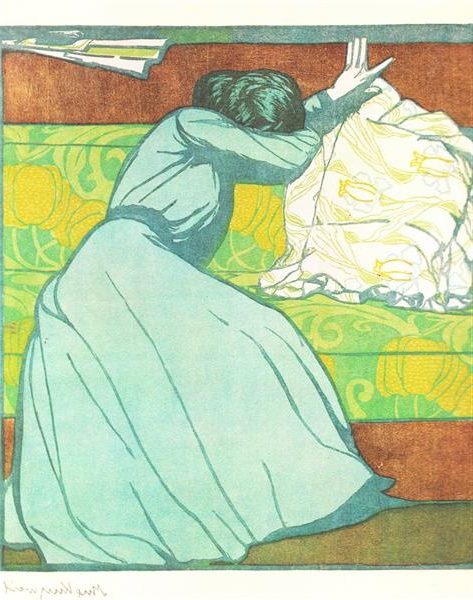

Landscapes were another focus for Kurzweil. “Landscape with Saltlick” and “Port of Concarneau” display his talent for outdoor scenes. He painted nature with a gentle touch, using soft colors to create peaceful views.
Notable Paintings
Some of Kurzweil’s most famous works include “The Cushion” and “Love.” These paintings show intimate moments with a dreamy quality. “Despair” is a darker piece that reveals the artist’s skill in portraying complex feelings.
“By the Stream” combines Kurzweil’s love of nature with his portrait skills. It shows a figure in a lush setting. This painting highlights his ability to blend people and landscapes.
Kurzweil was also a printmaker and illustrator. These skills added depth to his artistic output. His prints often featured the same themes as his paintings, but in a different medium.
Legacy and Exhibitions
Max Kurzweil’s artistic legacy lives on through his paintings and prints. His works are displayed in major museums across Austria and beyond. The Vienna Museum and Österreichische Galerie Belvedere house significant collections of his art.

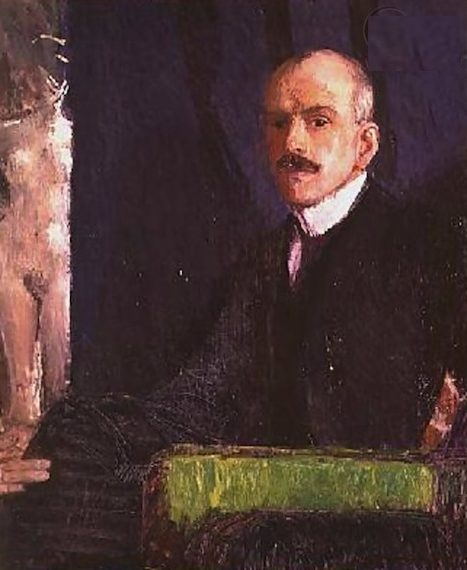
Kurzweil won the prestigious Villa Romana Prize in 1905. This award allowed him to spend time in Florence, Italy, furthering his artistic development. His time there influenced his later works.
The artist’s personal life also shaped his legacy. He was married to Helene Heger and had two daughters, Bettina and Mira Bauer. Their family relationships were often reflected in his portraits.
Several important exhibitions have showcased Kurzweil’s work:
- A major retrospective at the Vienna Museum in 1986
- “Vienna 1900” at the Art Gallery of New South Wales in 2011
- Regular displays at the Österreichische Galerie Belvedere
Kurzweil’s portraits, including those of Therese Bloch-Bauer, continue to be admired for their psychological depth and technical skill. His contributions to the Vienna Secession movement remain an important part of art history.
Frequently Asked Questions
Max Kurzweil was a key figure in Austrian art at the turn of the 20th century. His works and contributions shaped the Vienna Secession movement and influenced later artists.
What are the most notable works of Max Kurzweil?
Kurzweil’s “Woman in Yellow Dress” from 1899 is one of his best-known paintings. This work showcases his skill in portraiture and use of color.
He also created many prints and drawings during his career. Some of his other notable works include landscapes and scenes of everyday life in Vienna.
How did Max Kurzweil contribute to the art movement of his time?
Kurzweil was an important member of the Vienna Secession. This group aimed to break away from traditional Austrian art styles.
He helped organize exhibitions and promote new artistic ideas. Kurzweil’s own paintings mixed elements of realism with more modern approaches to color and form.
In what style did Max Kurzweil paint ‘Lady in Yellow Dress’?
“Lady in Yellow Dress” blends realistic portraiture with touches of the emerging Secession style. The painting shows careful attention to the subject’s features and clothing.
At the same time, Kurzweil used bold colors and simplified some background elements. This mix of styles was typical of his work during this period.
Can you describe the significance of ‘The Last Visit’ in Max Kurzweil’s career?
“The Last Visit” is not mentioned in the provided search results. Without more information, it’s not possible to comment on its significance in Kurzweil’s career.
What influence did Max Kurzweil have on later artists?
As a member of the Vienna Secession, Kurzweil helped pave the way for modern art in Austria. His work bridged older styles with newer artistic ideas.
This approach likely inspired other artists to experiment with different techniques. Kurzweil’s prints and paintings may have influenced later Austrian and European artists.
How is ‘A Walk in the Garden’ reflective of Max Kurzweil’s artistic vision?
The search results don’t mention “A Walk in the Garden.” Without specific information about this work, it’s not possible to explain how it reflects Kurzweil’s artistic vision.

